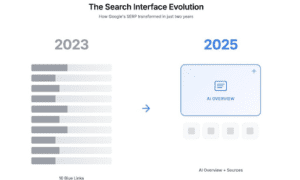My name is Lev Mazaraki. I’ve been traveling the world all my life, trying to capture the spirit of different cultures and communities in one shot. I’ve seen how one photo can tell the story of an entire village, convey its values and atmosphere without a single word. Today, when millions of people work remotely, forming “digital tribes”, I understand that they face the same task: to tell their story and create a sense of unity without having a common ground under their feet. The physical office has disappeared, and in its place there is a void that needs to be filled.
This article is not about the technical settings of the camera, but about the strategic role of visual content in the new working reality. In it, we will explore how photography replaces the office “environment”, helps to convey the company’s values, engages employees in common life, and creates the very sense of community that is critical to the success of any distributed team. This is a practical guide on how visual images become the foundation for a strong and cohesive digital culture.
Photos create a common space
The office is not just a set of desks, but a set of visual anchors: a view from the window, posters on the walls, a shared kitchen. These details form a familiar working environment. In the deleted format, such common physical landmarks disappear. Here, photography takes on the task of creating a new, digital space. When employees share pictures of their workplaces, whether it’s a table on the balcony, a cozy armchair by the fireplace, or a laptop in the woods, they build a collective image of their virtual office.
This approach turns disparate home corners into a single mosaic. Internal channels in messengers or shared photo albums become the walls of this new “house”. The team sees the environment in which colleagues work, which creates a presence effect and forms a common visual environment. This simple action helps people feel like they are part of a single whole, rather than isolated performers.
Snapshots replace non-verbal communication
In addition to creating a common environment, visual images solve another important task: they fill in the deficit of non-verbal communication. In correspondence, we do not see the gestures, facial expressions and emotions of the interlocutor. It is photography that helps to humanize digital communication and build trust. A genuine snapshot of a colleague is more endearing than his formal status in the work program.
This principle works at all levels. Abandoning faceless avatars in favor of high-quality and lively portraits immediately makes communication more personal. Sharing informal photos, such as pictures of pets or your hobbies, allows you to get to know each other better as individuals. Even simple screenshots from video calls, where the team is laughing or having a lively discussion, capture positive dynamics and strengthen emotional bonds.

Creative ways to share remote work moments and build connection
The photo tells the story of the team
When trust is established, the team is ready to create a common story. Here photography becomes the main chronicler. Travel photography documents the journey, and the visual content of the remote team should document their professional journey. The pictures illustrate the company’s values better than any declarations. If a business claims freedom, then photos of employees working from different parts of the world are the best confirmation of this.
The visual chronicle captures important milestones: the completion of a complex project, a virtual celebration of success, and the connection of a new client. These are not just reports, but the creation of a common victory story that inspires and motivates. When each employee sees himself as a part of this large visual narrative, his personal involvement in the common cause increases significantly.
Conclusion
Photography in remote commands performs three key functions: It builds a common space, serves as a language for trust, and creates a common story. This is not just a set of beautiful pictures, but an architectural material for creating a digital culture. To ignore this tool is to deprive your team of the foundation on which engagement and team spirit are based in a world without physical boundaries.
Start treating the photos in your team strategically. Encourage employees to share visual highlights of their work lives. Create simple and accessible channels for this exchange. Think of the pictures not as reports, but as a way to tell the story of your shared journey. In a world where people may never meet in person, a strong and thoughtful visual culture becomes the main key to success.



































